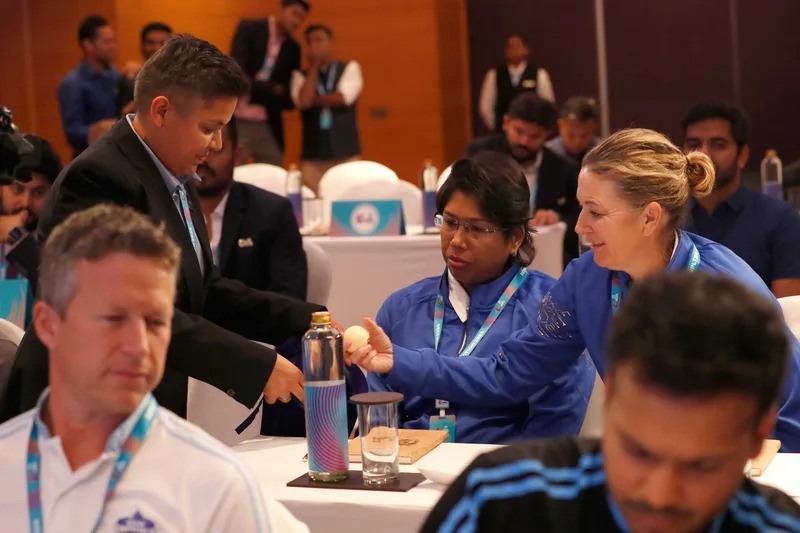
For the first three seasons of the Indian Premier League (IPL), Lalit Modi was a ubiquitous presence, usually in a beige or cream linen suit. His relentlessly upbeat demeanour and bombastic statements ensured that the IPL stayed in the limelight even out of season.
It was no surprise then that a sizeable media contingent journeyed to Goa in early February 2009, for the second IPL auction. After the mega auction in 2008, most squads were pretty full with players on three-years deals, but some high-profile names had made themselves available for a season that would eventually end up being played in South Africa. Kevin Pietersen and Andrew Flintoff, Ashes heroes from 2005, had both thrown hats into the ring, and Shaun Tait, World Cup winner with Australia in 2007, was also in the fray.
That morning, though this was only a mini-auction, Modi looked worried. In many ways, this was the acid test for the brand he had created. The first season had been sustained by the euphoria surrounding India’s World T20 triumph in 2007, the sheer magnetism of Shane Warne and the incessant hype on television. But not everyone was happy. Several franchises had botched their recruitment, selecting players on reputation rather than suitability to the format, and there were still plenty of doubts over the long-term robustness of the financial model.
Had the auction been met with a muted response from the franchises, the chorus of doubters would have grown louder. Modi’s boasts about how the IPL would soon be comparable to the USA’s elite sporting leagues would have looked foolish if the team owners kept their chequebooks closed.
As it was, only 17 of the 43 players up for auction were sold. But that didn’t matter. Those that were created headlines around the world. Pietersen and Flintoff went for $1.55 million each, while JP Duminy cost Mumbai Indians $950,000. But the most eyebrows were raised by the signings of Tyron Henderson ($650,000) and Mashrafe Mortaza ($600,000), players who would even create a ripple when they played. The scouting skills left much to be desired, but the money spent was an emphatic endorsement of Modi’s vision for the league. Those that owned the teams, whose opinions really mattered, were not doubters. By afternoon, the Cheshire-cat grin was back on Modi’s face.
This Women’s Premier League (WPL) auction was no different. A big push from the BCCI had seen the first season completed, but this first realignment of squads was an acid test. As with the IPL in its early years, the preliminary selections had sometimes been made with little thought for team balance and the players’ suitability for Indian conditions. Would once-bitten team owners be shy of splashing the cash the second time?
The answer was a resounding ‘No’. Phoebe Litchfield got the ball rolling, recruited by Gujarat Giants for a crore. Annabel Sutherland, released by Gujarat after a dismal first season, found a new home in Delhi. The price tag of Rupees 2 crores was nearly the entire auction budget for a couple of teams.
It didn’t end there. Shabnim Ismail, once the fastest quick in women’s cricket but now retired from the international game, barely got a look in with UP Warriorz in season 1. But despite her now-itinerant career, Mumbai Indians, the reigning champions, deemed her worthy of a Rupees 1.2 crore contract.
Those, though, were known faces and names, just like Danni Wyatt, a steal for UP at the base price of 30 lakhs. The real proof of the WPL’s status among those that hold the purse strings came when UP paid Rupees 1.3 crores for Vrinda Dinesh, before Gujarat stole their thunder by putting down 2 crores for Kashvee Gautam. Both women, 22 and 20, have played for India A, but are very much untested at the highest level.
By handing out such contracts, the franchises have shown that the future is as important as an illustrious resume. Time will tell how the likes of Dinesh, Gautam and Litchfield perform, but by taking out their wallets with such enthusiasm, the corporate entities behind the five franchises told those watching that the WPL is here to stay. It certainly won’t be a flash in the pan.



